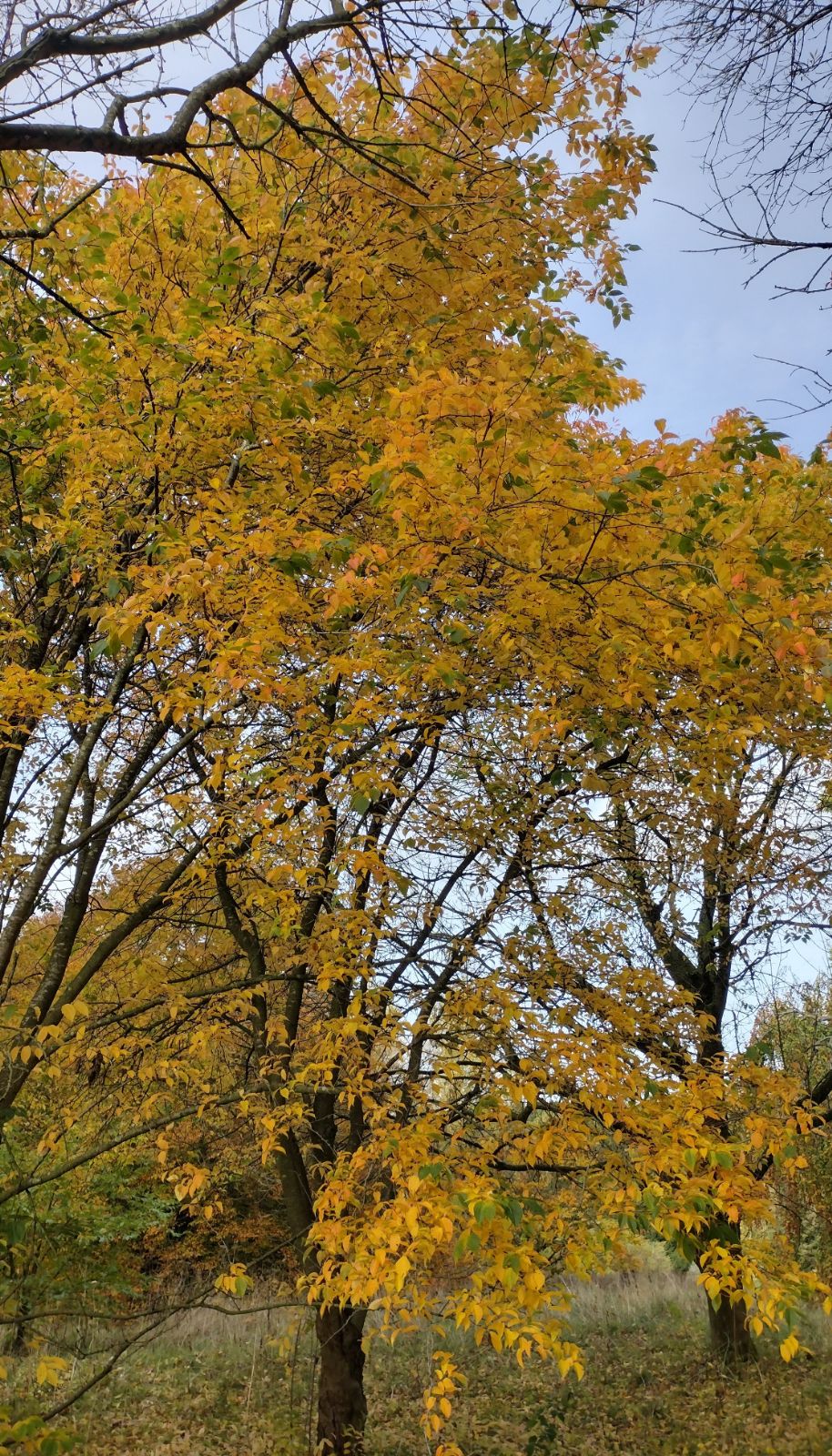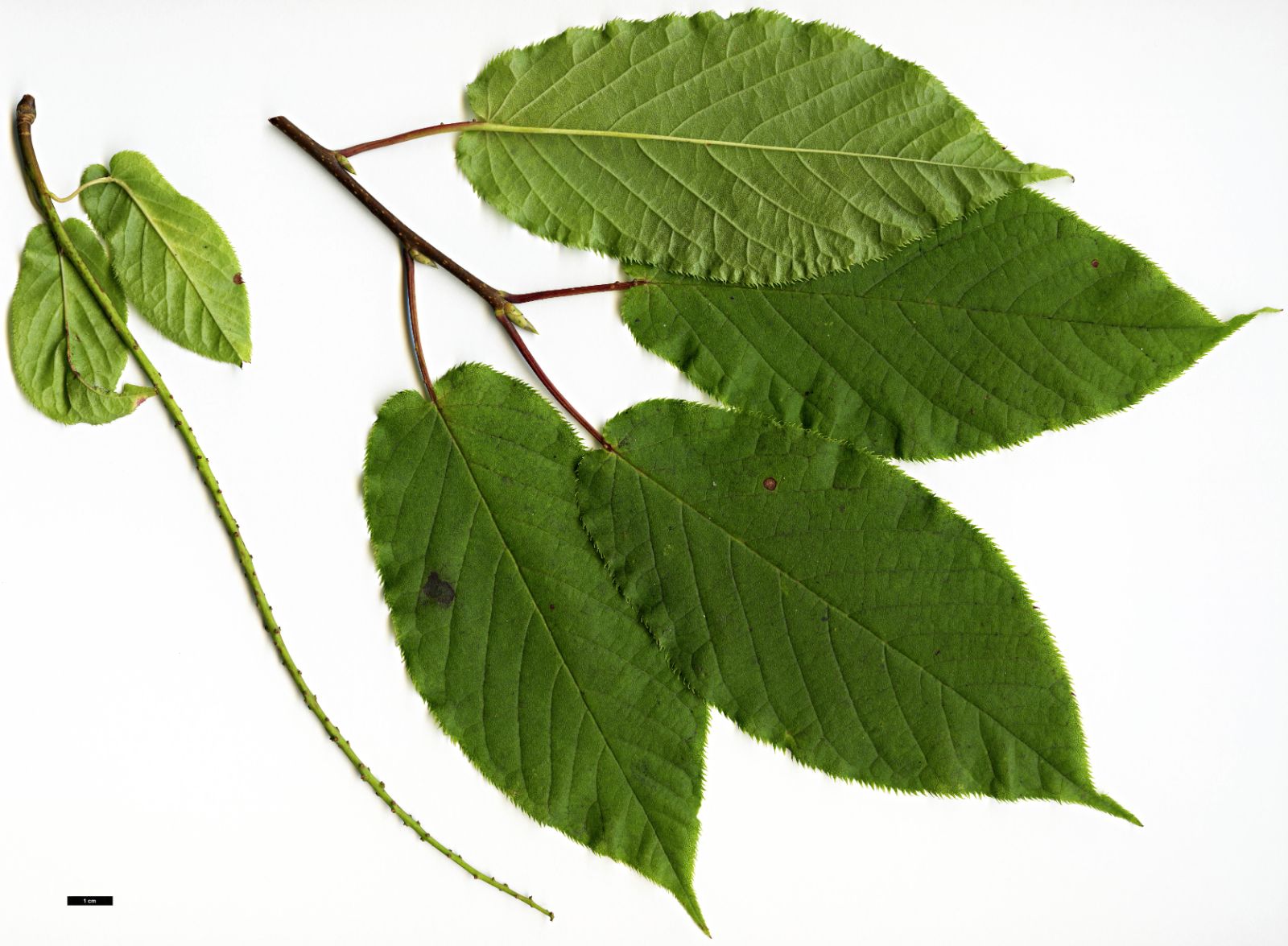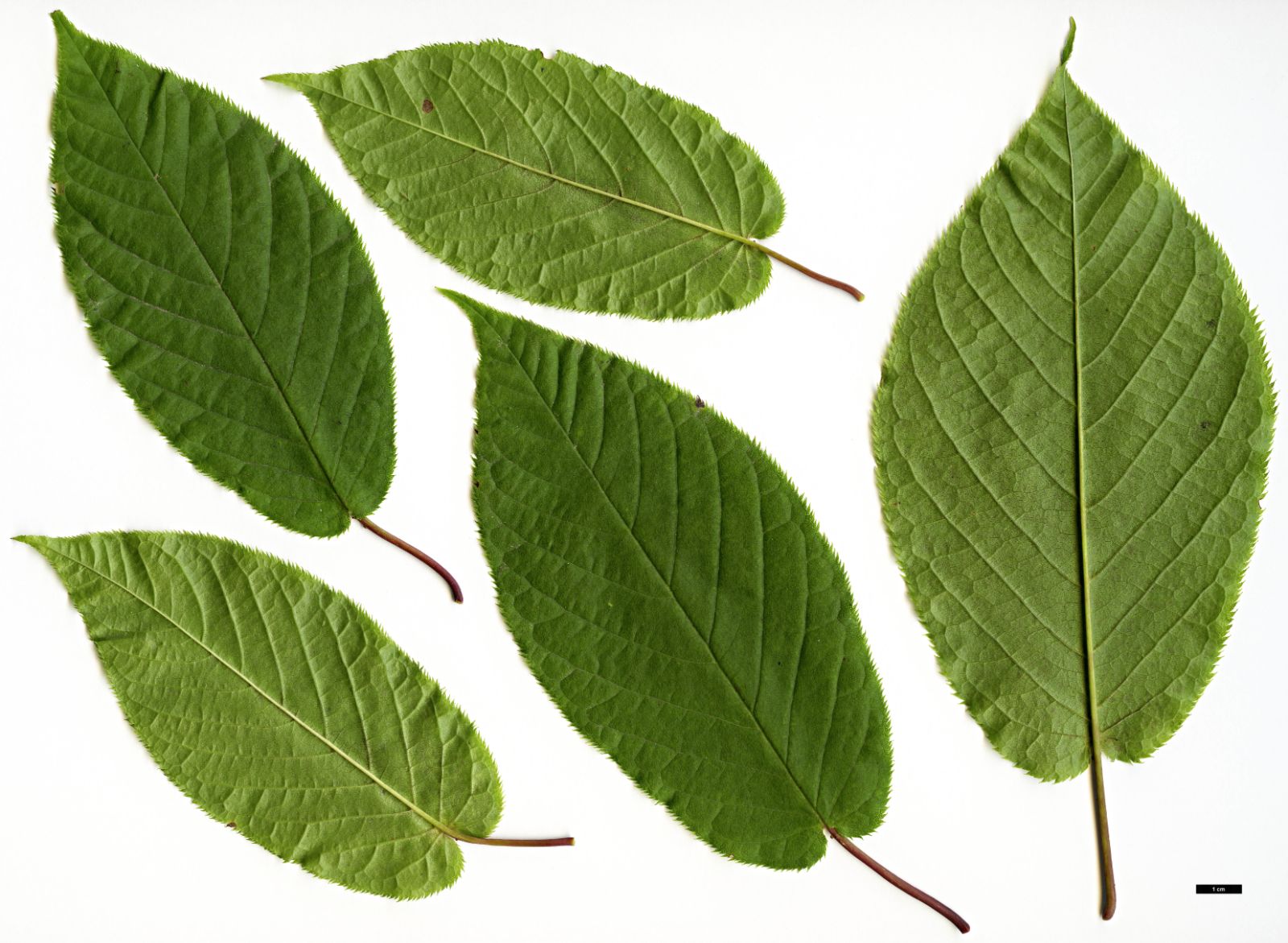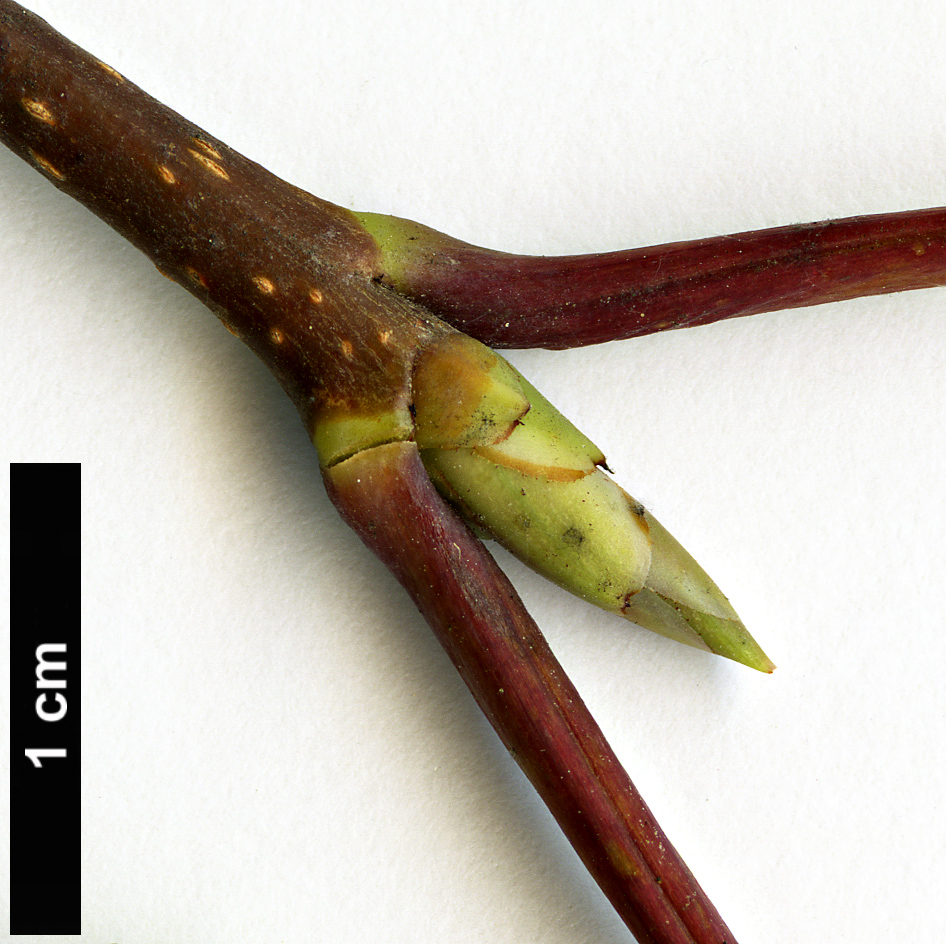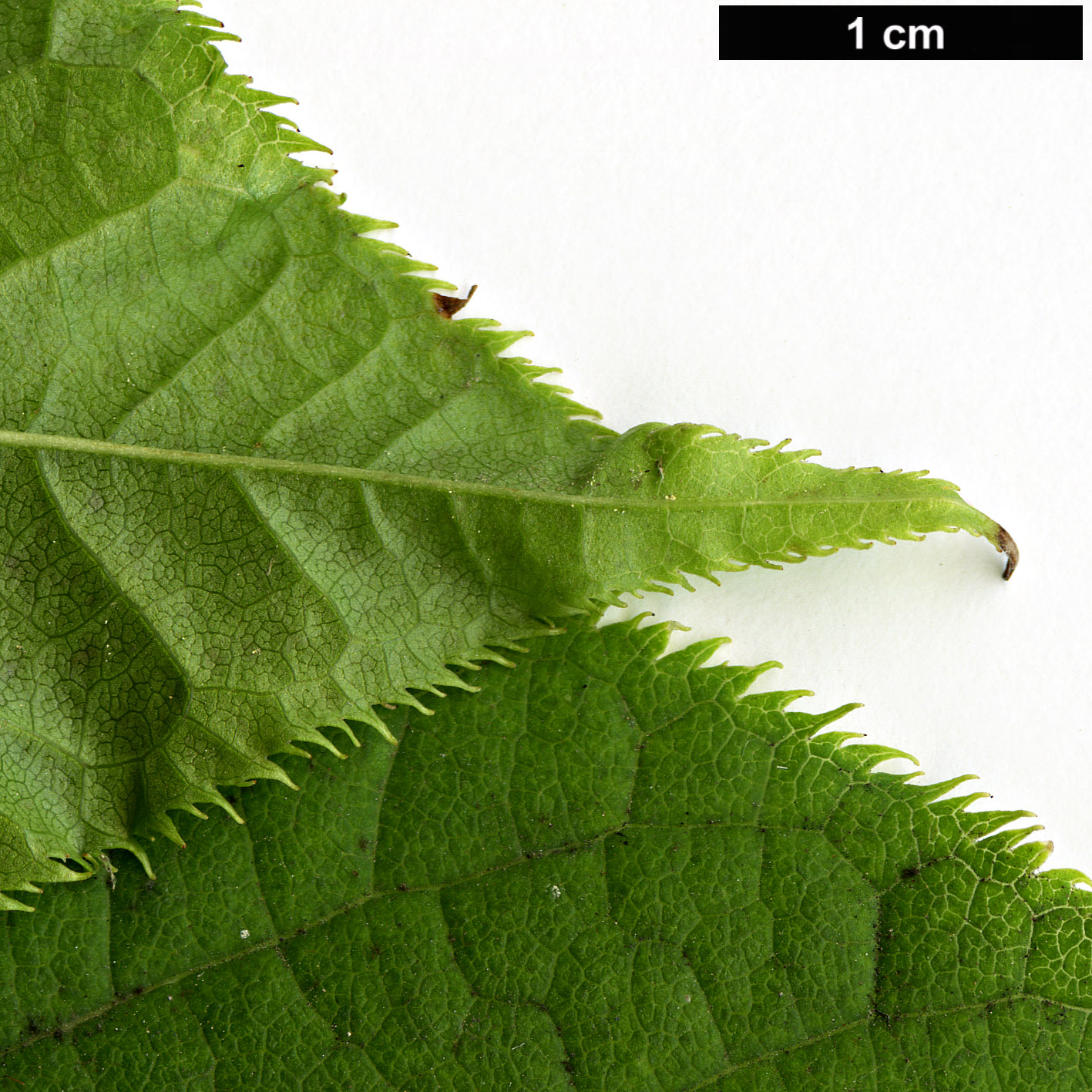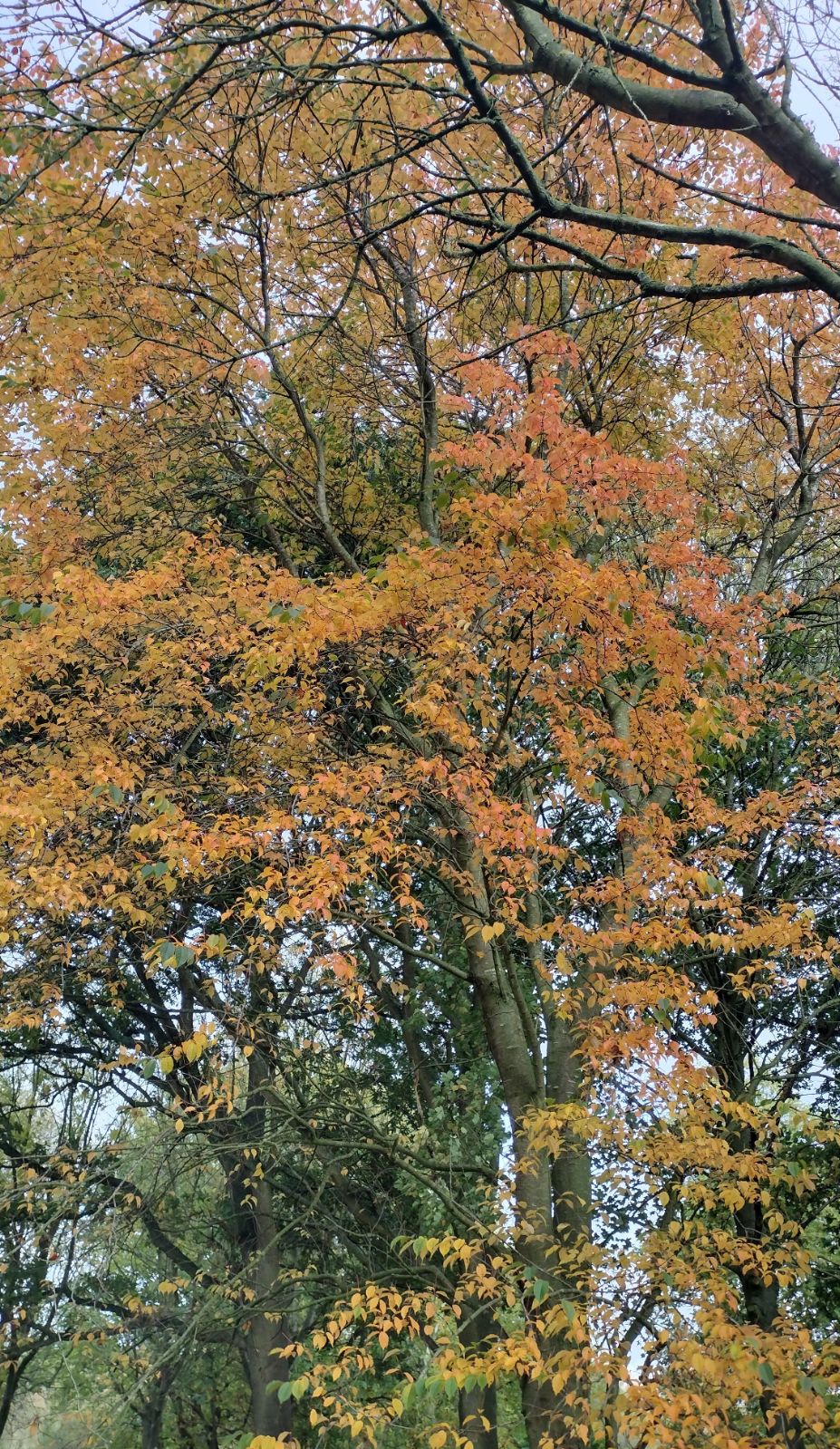Prunus ssiori
Credits
Article from Bean's Trees and Shrubs Hardy in the British Isles
Recommended citation
'Prunus ssiori' from the website Trees and Shrubs Online (treesandshrubsonline.
Genus
Synonyms
- Padus ssiori (F. Schmidt) Schneid.
Other taxa in genus
- Prunus alleghaniensis
- Prunus americana
- Prunus × amygdalo-persica
- Prunus amygdalus
- Prunus angustifolia
- Prunus apetala
- Prunus arabica
- Prunus argentea
- Prunus armeniaca
- Prunus avium
- Prunus besseyi
- Prunus brigantina
- Prunus campanulata
- Prunus canescens
- Prunus cantabrigiensis
- Prunus cerasifera
- Prunus cerasus
- Prunus cocomilia
- Prunus concinna
- Prunus conradinae
- Prunus consociiflora
- Prunus cornuta
- Prunus cuthbertii
- Prunus dasycarpa
- Prunus davidiana
- Prunus × dawyckensis
- Prunus dielsiana
- Prunus domestica
- Prunus dulcis
- Prunus emarginata
- Prunus × fontanesiana
- Prunus fruticosa
- Prunus glandulosa
- Prunus grayana
- Prunus himalaica
- Prunus hortulana
- Prunus humilis
- Prunus ilicifolia
- Prunus incana
- Prunus incisa
- Prunus jacquemontii
- Prunus kansuensis
- Prunus lannesiana
- Prunus laurocerasus
- Prunus litigiosa
- Prunus lusitanica
- Prunus maackii
- Prunus mahaleb
- Prunus maritima
- Prunus maximowiczii
- Prunus microcarpa
- Prunus mira
- Prunus mugus
- Prunus mume
- Prunus nigra
- Prunus nipponica
- Prunus orthosepala
- Prunus padus
- Prunus pensylvanica
- Prunus persica
- Prunus pilosiuscula
- Prunus prostrata
- Prunus pumila
- Prunus rufa
- Prunus salicina
- Prunus sargentii
- Prunus serotina
- Prunus serrula
- Prunus serrulata
- Prunus sibirica
- Prunus × sieboldii
- Prunus simonii
- Prunus sogdiana
- Prunus speciosa
- Prunus spinosa
- Prunus subcordata
- Prunus subhirtella
- Prunus takesimensis
- Prunus tangutica
- Prunus tenella
- Prunus tomentosa
- Prunus triloba
- Prunus virginiana
- Prunus × yedoensis
Although, according to Sargent, this bird cherry is a common tree in Hokkaido (Yezo), and in the mountain forests of the main island of Japan, it was not brought into cultivation until 1915. The same author (Forest Flora of Japan, p. 38) observes that it is always easily distinguished by its pale, nearly white bark. Young shoots glabrous. Leaves 3 to 6 in. long, oblong, often inclined to obovate, the apex drawn out into a long slender point, the base more or less heart-shaped, the margins closely set with fine almost bristle-like teeth, thin, membranous, glabrous above and the same beneath except for the tufts of brownish down in the vein-axils; stalk slender, 1 to 11⁄2 in. long, with one or two glands near the blade. Flowers small, white, produced in slender, glabrous cylindrical racemes 4 to 6 in. long, about 1 in. wide. The species has been found in Manchuria and Sakhalin. ‘The wood is very hard and close-grained, and is used by the Ainos for numerous domestic purposes’ (Sargent).

